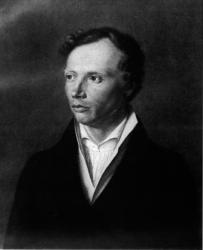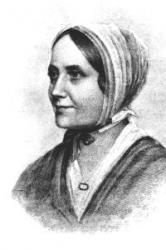Planning worship?
Check out our sister site, ZeteoSearch.org,
for 20+ additional resources related to your search.
- |
User Links
Search Results
This is the Sabbath day! This is the Sabbath day!
Author: Ludwig Uhland Appears in 5 hymnals Hymnal Title: Calvin Hymnary Project
This is the Sabbath day! This is the Sabbath day!
[This is the Sabbath day]
Appears in 3 hymnals Composer and/or Arranger: Mendelssohn Hymnal Title: Hymns of Worship and Service Incipit: 13554 33456 71176 Used With Text: This is the Sabbath day
[This is the Sabbath day]
This is the Sabbath day
Hymnal: Hymns of Worship and Service #290 (1908) Hymnal Title: Hymns of Worship and Service Languages: English Tune Title: [This is the Sabbath day]
This is the Sabbath day
This is the Sabbath day
Hymnal: Hymns of Worship and Service #290 (1913) Hymnal Title: Hymns of Worship and Service Languages: English Tune Title: [This is the Sabbath day]
This is the Sabbath day
This is the Sabbath day
Author: Eliza L. Follen; Ludwig Uhland Hymnal: Sunday School Singing Book #d36 (1832) Hymnal Title: Sunday School Singing Book
This is the Sabbath day
Ludwig Uhland

1787 - 1862 Hymnal Title: Calvin Hymnary Project Author of "This is the Sabbath day! This is the Sabbath day!" German poet, lawyer, and politician
Ludwig Uhland
Felix Mendelssohn-Bartholdy

1809 - 1847 Person Name: Mendelssohn Hymnal Title: Hymns of Worship and Service Composer of "[This is the Sabbath day]" in Hymns of Worship and Service Felix Mendelssohn-Bartholdy (b. Hamburg, Germany, 1809; d. Leipzig, Germany, 1847) was the son of banker Abraham Mendelssohn and the grandson of philosopher Moses Mendelssohn. His Jewish family became Christian and took the Bartholdy name (name of the estate of Mendelssohn's uncle) when baptized into the Lutheran church. The children all received an excellent musical education. Mendelssohn had his first public performance at the age of nine and by the age of sixteen had written several symphonies. Profoundly influenced by J. S. Bach's music, he conducted a performance of the St. Matthew Passion in 1829 (at age 20!) – the first performance since Bach's death, thus reintroducing Bach to the world. Mendelssohn organized the Domchor in Berlin and founded the Leipzig Conservatory of Music in 1843. Traveling widely, he not only became familiar with various styles of music but also became well known himself in countries other than Germany, especially in England. He left a rich treasury of music: organ and piano works, overtures and incidental music, oratorios (including St. Paul or Elijah and choral works, and symphonies. He harmonized a number of hymn tunes himself, but hymnbook editors also arranged some of his other tunes into hymn tunes.
Bert Polman
Felix Mendelssohn-Bartholdy
Eliza Lee Cabot Follen

1787 - 1860 Person Name: Eliza L. Follen Hymnal Title: Sunday School Singing Book Author of "This is the Sabbath day" in Sunday School Singing Book Follen, Eliza Lee, née Cabot, a well-known Unitarian writer, daughter of Samuel Cabot, born at Boston, August 15, 1787, and married, in 1828, to Professor Charles Follen, who perished on board the "Lexington," which was burnt on Long Island Sound, Jan. 13,1840. Mrs. Follen died at Brookline, Mass., 1860. She was a voluminous writer. Her Poems were first published at Boston (Crosby & Co.), 1839, and whilst she was in England she issued another volume for children's use, entitled The Lark and the Linnet, in 1854. Both volumes also contain some translations from the German, and versions of a few Psalms.
Her best known hymns are:—
1. How sweet to be allowed to pray. Resignation. Appeared in the Christian Disciple, Sept., 1818, and in her Poems, 1839, p. 116, in 4 stanzas of 4 lines, and entitled, "Thy will be done."
2. How sweet upon this sacred day. Sunday. In her Poems, 1839, pp. 113-114, in 6 stanzas of 4 lines, and entitled “ Sabbath Day.” It previously appeared in Sabbath Recreations, 1829.
3. Lord, deliver, Thou canst save. Prayer for the Slave. Found in Songs of the Free, 1836; but is not given in her Poems, 1839. In Adams and Chapin's Hymns for Christian Devotion, Boston, U.S., 1846, it is No. 802, in 5 stanzas of 4 lines. In common with No. 2 it has found acceptance out¬side Unitarian Collections.
4. God, Thou art good, each perfumed flower. This is the original of J. H. Gurney's hymn," Yes, God is good," &c. (q.v.) There is some obscurity about the text. It is found in her Hymns for Children, Boston, 1825, beginning, "God is good," each perfumed flower," and this obvious misprint (which destroys the metre) was usually copied in later books. It is also given with the same first line as an original piece, never before published, and signed "E. L. C." (initials of Mrs. Follen's maiden name), in Emily Taylor's Sabbath Recreations, Wellington, Salop, 1826, p. 203. This suggests that it was printed in the American book after the US. was posted to England. Mrs. Follen may have written at first “Yes, God is good," but this cannot now be determined. It begins, “God, Thou art good," &c, in her Poems, 1839, p. 119, and in her verses, The Lark and the Linnet, &c, 1854, and in each case is in 6 stanzas of 4 lines, with the title, "God is Good."
5. Will God, Who made the earth and sea. A Child's Prayer. Given in her Poems, 1839, p. 164, in 7 stanzas of 4 lines. In Dr. Allon's Children's Worship, 1878, No. 212, it is abbreviated to 4 stanzas (i.-iv.), and attributed to H. Bateman in error. [Rev. F. M. Bird, M.A.]
--John Julian, Dictionary of Hymnology (1907)
Eliza Lee Cabot Follen


 My Starred Hymns
My Starred Hymns


